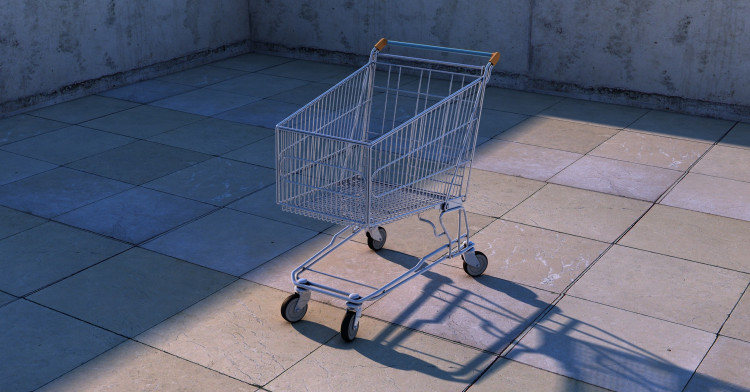Companies that deliver goods will have to make their logistics processes sustainable. But what does sustainable delivery mean? Sustainable delivery is the process of delivering goods in a responsible and environmentally friendly way, through efficient logistics, sustainable packaging solutions and the use of zero-emission vehicles e.g. electric vehicles.
Traditional delivery methods and their impact on the environment
Traditional delivery methods have a major impact on the environment. Traditional delivery methods cause increasing emissions in the logistics sector due to the increase in orders. Companies agree that something needs to change in terms of sustainability, think PostNL, DHL, RouteLogic and Picnic. But the constraints are great, both economically and technically. Buying electric buses, for example, is a hefty investment. And are there enough charging points to charge these buses? Fortunately, buying electric buses is not the only solution, later in the article we will come up with concrete tips on how you can deliver sustainably.
The role of consumers and businesses in the future
Millions of parcels are delivered every day. And this number is not expected to decrease in the coming years. The emissions caused by delivering goods are enormous. Just think how many parcels you order every year. And whether you choose the sustainable delivery option. Some services give you the option of having your parcel delivered sustainably. This often costs you a few extra euros and the delivery times are a lot less flexible.
A survey by delivery.yeshugo shows that 40% of consumers are willing to pay extra for sustainable delivery. And this is not surprising, as more than half of the Dutch (50%) are concerned about the environmental impact of online purchases.
Sustainable delivery solutions and developments
Both consumers and delivery services can contribute to a sustainable future. But how do you achieve this as a delivery service? We list some tips for you on how to make your delivery service a lot more sustainable.
1. Electric delivery vans
Using electric vehicles: using electric vehicles instead of petrol or diesel vehicles can reduce emissions from the delivery service. Using electric vehicles also reduces the cost per kilometre, the vehicle is quiet which is pleasant for the driver and nearby residents, has lower maintenance costs and contributes to your company's green image.
2. HVO100 (Hydrotreated Vegetable Oil)
HVO100 is an alternative which is available for transport that currently runs on diesel and is not yet ready to switch to electric. Besides vegetable oils, HVO is also produced from waste, residual oils and fats, such as used frying fat. HVO100 is not a zero e-emission fuel, but it is a good (intermediate) solution with a 90% CO2 reduction.
3. Make consumers aware of the environmental impact of delivery option
As a delivery service, it is important to make consumers aware of the impact of their order. By communicating the impact of delivery, you create customer awareness. By creating awareness, customers will now think longer about which delivery option they will consider.
4. Air reduction of packaging
Every little bit helps, so does air reduction. Air reduction means reducing air in packages. There has already been a lot of attention for this in recent years, but in the coming year there will be even more. A survey conducted by PostNL shows that 93% of consumers have received a product in oversized packaging at some point. By reducing air in parcels, less material is used and more parcels fit in a delivery van, reducing the CO2 impact per parcel sent.
5. Prevent returns
Ordering and returning packages these days is done at the click of a button. No wonder the number of returns has increased in recent years. But the many returns have anything but a positive effect on the environment. As a webshop, make the threshold higher for consumers to return. Wehkamp recently started this as a large webshop. In addition, the use of Track & Trace can help reduce returns. Because consumers know when their parcel arrives, they are more likely to receive it instead of having to take it back or deliver it to a delivery point.
6. Vehicle optimal loading
Optimal loading of the vehicle ensures an efficient delivery route. By filling the vehicle completely, routes can be planned as efficiently as possible, reducing CO2 emissions. Suppose the van is half full, the delivery van has to cover twice as many kilometres for the same number of parcels. And this means, twice as many CO2 emissions. Tip 4 ensures that you can fit more parcels in the bus than before. And are you curious about how to drive the most efficient route? Then read tip 7!
7. Route optimisation software
The more efficient the route, the fewer emissions. It's as simple as that. With route planning software, you deliver goods in the most efficient way. This not only saves fuel, but also time and money. And besides, you emit less, which is good for the environment. But how much will this save you? With RouteLogic's savings tool, you can work it out!
RouteLogic's tool takes into account:
- The number of vehicles;
- How many hours a vehicle drives on average per day;
- How many kilometres a vehicle drives on average per day;
- How many hours you spend on route planning per day;
- What a driver's hourly wage is;
- What the fuel price per litre is.
When you answer the questions above, you will find out what you save every month when you use the RouteLogic route planner.
As you have read, sustainable delivery has become a major talking point in the logistics sector. Reducing packaging air, route optimisation, electric delivery vans and fully filling the van helps with sustainable delivery. Making consumers aware of the environmental impact of delivery options can also contribute to sustainable delivery. As a company, make sure you are aware of the environmental impact and actively work on improvements to protect future generations.


